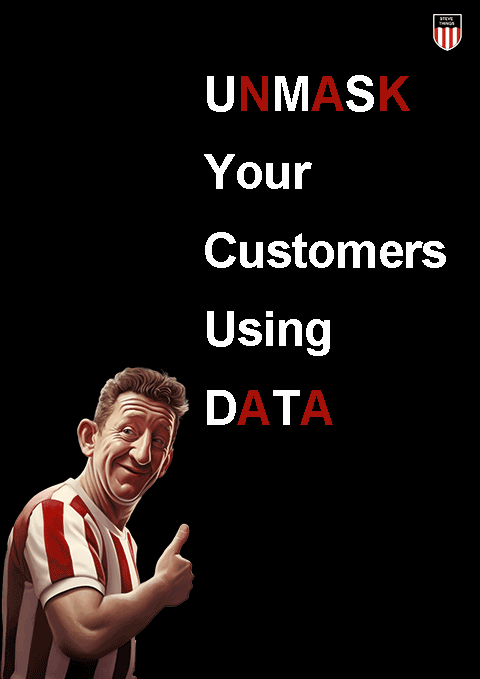Do you know the difference between a CDP (customer data platform) and a CRM (customer relationship management)? Do you need one or the other? Or both?
In this article, I'll explain the differences between these two platforms, so you can make an informed decision about which one is best for your specific needs. Let's get started!
Meaning Of CDPs And CRMs
The world of data management and customer relationship management tools is vast and constantly evolving. Businesses rely on these tools to help them better understand their customers, track important interactions, and improve their services. But what are CDPs and CRMs, and how do they differ?
CDP Software
A Customer Data Platform (CDP) is a tool used by businesses to collect, store, analyse, and activate customer data from various sources. It integrates with other systems such as marketing automation platforms and website analytics to provide marketers with an up-to-date view of each customer across all channels. This helps companies create more personalised experiences for their customers.
CRM Software
On the other hand, Customer Relationship Management (CRM) software is designed to manage customer information such as contact information, service requests, sales leads, and email campaigns in one central location. It also allows businesses to track customer activity such as purchase history or website visits over time. While both CDPs and CRMs offer valuable insights into customers' behaviours, they serve different purposes.
Ultimately, it's up to each business to decide which type of tool best meets their needs. By understanding the differences between CDPs and CRMs—and how they can be used together—businesses can make sure they choose the right tool for their needs.
Characteristics Of CDPs And CRMs
When it comes to selecting the right tool for your business, understanding the characteristics of CDPs and CRMs is essential. Let's take a look at some of the key distinctions between these two types of tools.
One of the main differences is in how they collect data. CDPs are able to ingest customer data from multiple sources and build a single unified view of each customer. This allows businesses to gain a holistic understanding of their customers' behaviours across different channels. On the other hand, CRMs focus on collecting data from internal sources such as emails or sales databases, providing them with a comprehensive view of customer activity within their own platform.
Another important distinction is in how they use this data. CDPs allow businesses to create personalised experiences for their customers by leveraging insights from customer profiles. They can also be used to inform marketing automation strategies and segment audiences for more targeted campaigns.
Our Aussie Fisherman example, Todd
When Todd books a European Fishing tour, the online travel agent (OTA) collects his contact information, demographic data, and booking details. This information can be stored in a CDP, which can then be used to create a comprehensive profile of Todd's interests, preferences, and behaviour.
Using this profile, the agent can personalise Todd's experience by recommending additional fishing tours or related products that match his interests. For example, if Todd has shown a preference somewhere in the CDP history for deep sea fishing, the OTA might recommend a deep sea fishing excursion during his trip.
A CDP is typically used by marketing teams to create personalised experiences for customers and inform marketing strategies, such as segmentation, targeting, and campaign optimization but it doesn't actually DO the campaign execution. It may trigger a campaign but it is unlikely to execute it (unless it's an end to end solution like ADOBE experience manager).
A CRM is primarily focused on managing customer interactions and relationships. It is typically used by sales, customer service, and support teams to track customer interactions, manage sales pipelines, and provide support to customers.
In the case of Todd the Aussie Fisherman, a CDP could be used to analyse his behaviour and preferences across various touch points with the fishing OTA, such as his website visits, email interactions, and tour bookings. This data could then be used to provide personalised experiences and inform marketing strategies.
In contrast, a CRM could be used to manage Todd's interactions and relationships with the fishing OTA, such as tracking his communication history, booking details, and feedback. This data could be used to provide better customer service and support, as well as to build stronger relationships with Todd over time.

Image by Kamran Aydinov on Freepik
Both CDPs and CRMs offer valuable insights into customer behaviour that can help businesses make more informed decisions when it comes to delivering great experiences for their customers. It's up to each business to decide which type of tool will best meet their needs and help them achieve success in an ever-evolving digital landscape.
Advantages Of Utilising CDPs And CRMs
When it comes to leveraging customer data, there are several advantages of utilising CDPs and CRMs. For one, both tools provide businesses with essential insights into customer behaviour that can help them make better decisions when it comes to delivering great experiences. Additionally, CDPs and CRMs allow businesses to create more personalised interactions with their customers. This increases the likelihood that customers will return, making them more valuable in the long run.
CDPs and CRMs can be used for marketing automation activities such as segmentation and targeting campaigns. This allows companies to reach the right people at the right time with the right message, which can lead to increased sales and revenue growth. Both tools provide best in class analytics about customers, unlike for instance web analytics tools which track anonymous behaviour on a website until the customer becomes a customer.
Ultimately, selecting the right tool for your business is a matter of weighing its benefits against its cost implications. It's important to weigh factors like scalability, data security measures and customer support options before settling on a particular solution so you ensure you get maximum value for your money in terms of customer insights and engagement.
How To Choose The Optimal Tool For Your Business
In order to make the right decision for your business, it is essential to consider both CDPs and CRMs. As these tools offer different benefits and drawbacks, it is important to understand what each tool can provide in order to determine which one is the best fit.
When assessing CDPs and CRMs, you should consider
Scalability
Scalability is particularly important because businesses need to ensure that their chosen tool can handle increasing amounts of data as their customer base grows over time. Do you need a one stop shop (something that manages execution and data handling, or do you want the flexibility and cost benefit of managing different systems?
Data security measures
You should also assess the level of data security measures that are in place for each tool. How safe is your customer data?
Customer support options
With regards to customer support options, this should include both technical support and training on how to use the tool. Are you left to your own devices to figure out the system or is there comprehensive support in place from the vendors?
Cost implications
Finally, cost implications must be taken into account when selecting a tool as businesses need to ensure they get maximum value for their money in terms of customer insights and engagement.
No single solution fits all scenarios; instead, finding the right balance between features and cost will help you deliver greater results with your marketing efforts.
Challenges With Implementing CDPs And CRMs
With the potential benefits of CDPs and CRMs in mind, there are challenges that come with implementing them.
Firstly, there is a significant cost associated with setting up and managing these tools. Secondly, businesses may also face technical issues when integrating them into existing systems or databases. Thirdly, companies need to ensure they have adequate staff resources on hand to handle different aspects of their data management strategy.
Another challenge lies in identifying and targeting the right customers at the right time. Without an effective data collection system in place, businesses may struggle to collect the insights they need to accurately target their audiences. This can lead to ineffective campaigns and a lack of engagement with customers. Finally, companies must also ensure they comply with relevant data privacy regulations when using CDPs and CRMs as part of their marketing strategy.
Summary
Hopefully this has helped you to understand the differences between CDPs and CRMs. Both of these tools have their advantages and challenges, so making an informed decision is key. Weighing out all the pros and cons of each will help you to determine which one is more suitable for your specific needs.
CRMs offer a comprehensive view of customer data, allowing businesses to provide personalised services and track customer interactions. On the other hand, CDPs are more powerful in terms of data storage, enrichment and triggering capabilities, providing valuable insights into customer behaviour across channels (web and offline).

